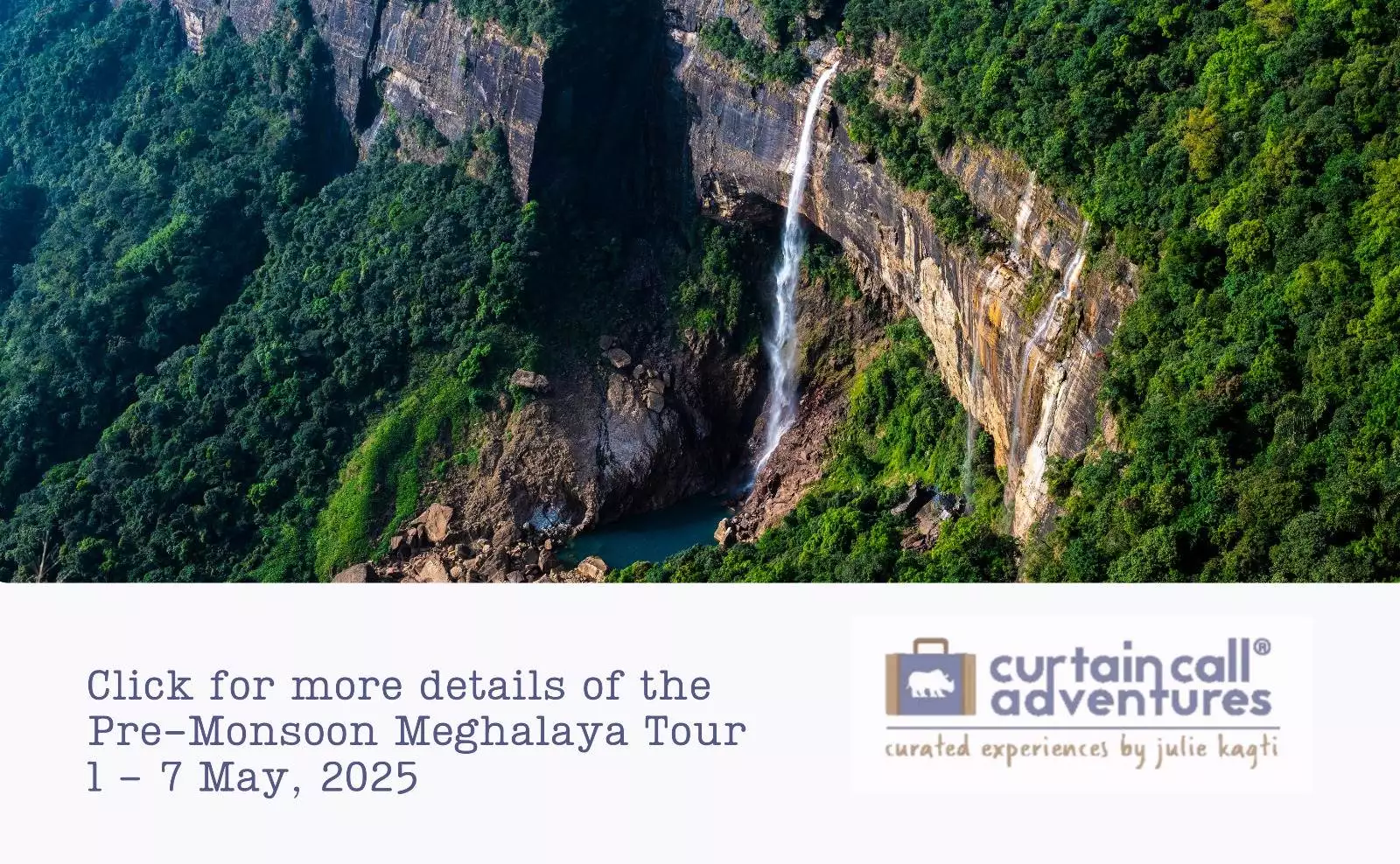The winter Sun is sparkling,
Nyamjang Chu too cold to touch.
In a valley surrounded by sea buckthorn and snowy mountains
Land the pair of red crowned birds.
Nyamjang Chu in Tawang originating from Tibet and being fed by high altitude lakes and many Himalayan springs, splits the Pangchen valley. Pangchen, meaning ‘the land who gave up the sin’, is also referred to as Zemithang valley. The valley is surrounded by the villages of Lumpo, Muchut and Gorsam in the West and Shocksten, Kharman, Kyalengteng and Zemithang towns in the East. Twisting and turning, the Nyamjang Chu river continues its journey to finally meet the Tawang Chu just before entering Bhutan.

The sandy river bank of Nyamjang Chu and the shrubland which borders it form the wintering site of Black-necked cranes in India. As the name suggests, it is distinguished by its black neck and red crown. With only a population of 11000, it is under the Endangered category of the IUCN Red List. In India, Black-necked cranes have their nesting site in Ladakh UT and their wintering sites in Zemithang and Sangti valleys in Arunachal Pradesh. The latter two are the only wintering sites of Black-necked cranes in India. Their significant wintering site lies in Phobjikha valley in Bhutan.

Almost every year in the Zemithang valley the Black-necked cranes have been spotted in the months of November- early January, sometimes in pairs and sometimes as individuals. This year (2021) as well, 8 Black-necked cranes arrived in the valley in the month of November.
When Manisha requested commission work in watercolor, depicting Black-necked cranes in their winter habitat of Zemithang, I realized this to be a moment of learning and it shaped into a more of a collaborative experience. It was an attempt to see how she sees, collecting from memories of her time in the valley and laying it down as washes of colors on a postcard sized paper.

The process that happens before actually painting, is exciting in itself for me. It is the time when I focus on learning about the subject, the landscape and elements that will make this artwork something that I hope will mirror her cherished memories and experience. In focus are the birds, a pair of them, foraging near the riverbed. To begin with, I research and make sure the plumage and behavior of the mature adults that needs to be depicted in their winter habitat is just right.
Turns out, getting to know what a place looks like during a specific time of the season is much more complex. It is here that I was lucky to have Manisha share with me resources, knowledge and her experience that helped us shape the rest of the composition. On a Google Earth image we marked the stretch of the riverbed where the birds land and forage during their stay. And that helped merge the habitat of the Black- necked cranes and the terrain of the landscape in a single composition. Soon the final composition and color palette was decided through a digital rendition; it was time to work on an actual paper.
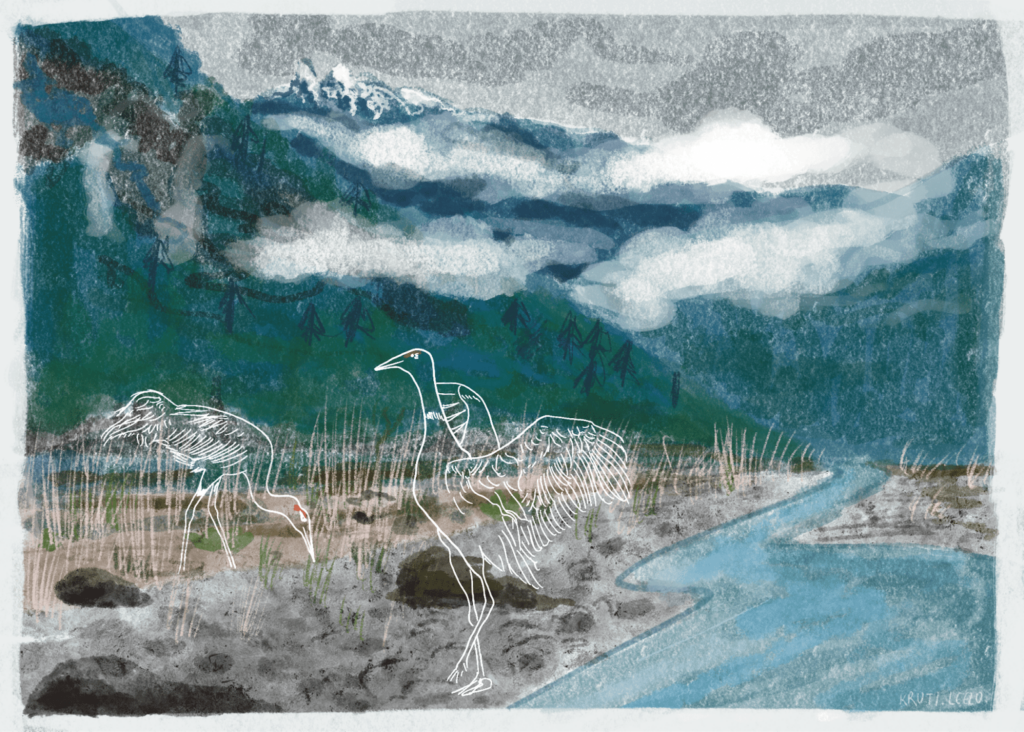
Birds were painted with dry brush technique, where in the brush carries mostly the pigment with hardly any water.
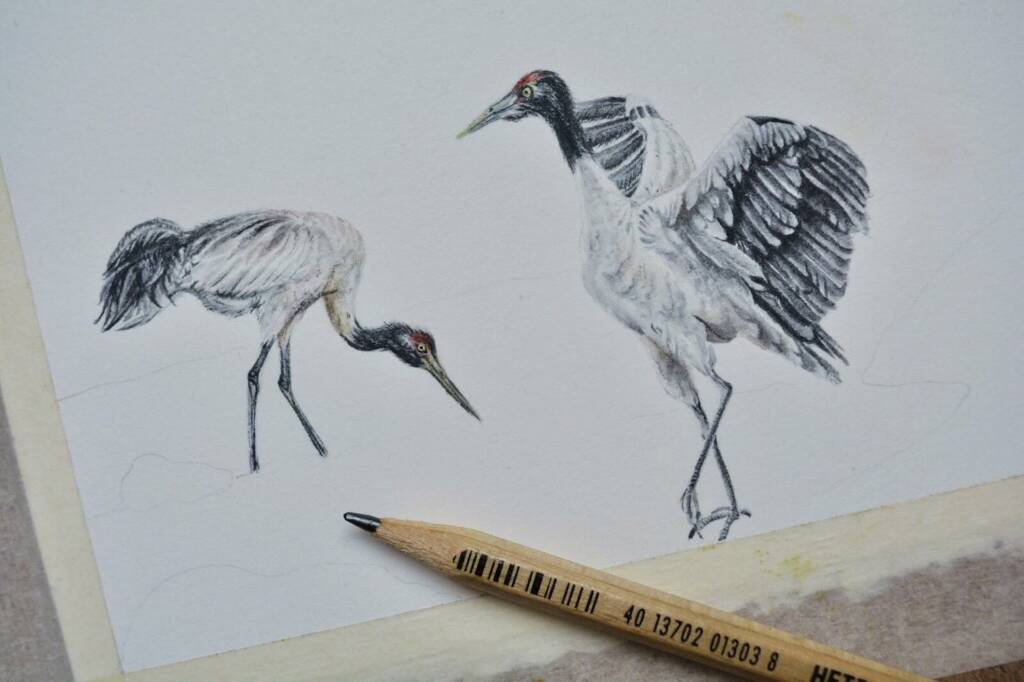
And then came the smooth river pebbles, rocks, grasses of the riverbed, sea buckthorn bushes, crystal clear blue waters of Nyamjang Chu, and the rolling fog that skirts the deep green-bluish mountains that are snow-capped during this time of the year.
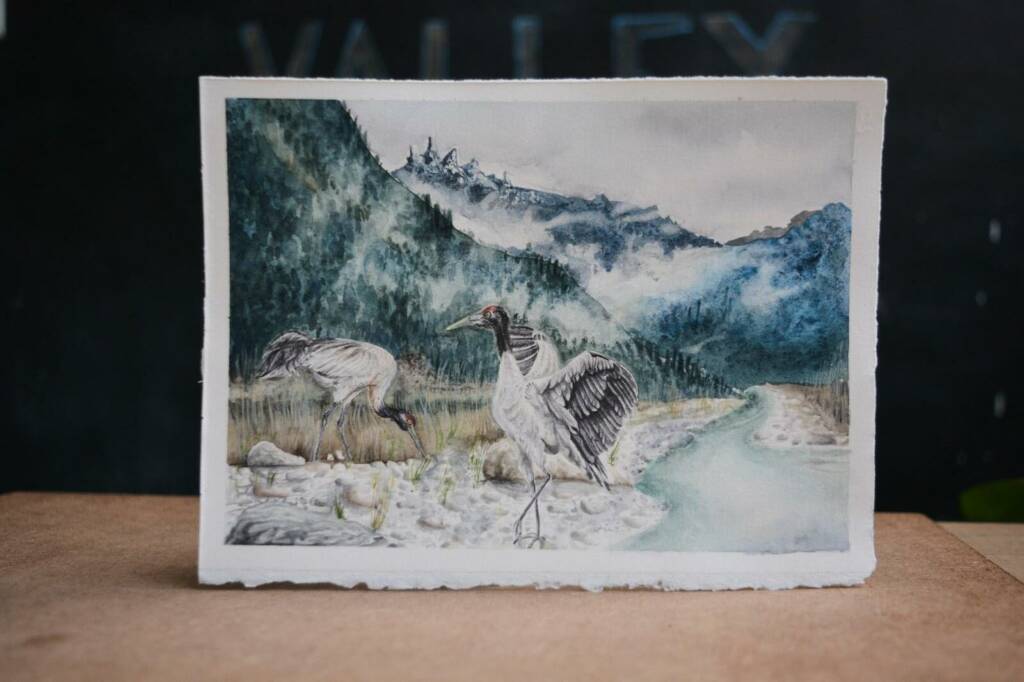
This painting reflects the fragile reality of this place and the Black-necked cranes. Anthropogenic pressures continue to put pressure on their habitat. Unregulated sand mining, vehicular and noise disturbance in Zemithang valley and change in cropping patterns, nuisance from tourists, feral dogs and construction of electric power lines in Sangti valley are the major reasons for their declining numbers in arrival. The year 2021 marked a fortunate landing of the birds, with 8 birds spotted in Zemithang valley and 3 in Jingkha and Sangti valley. Some of the immediate actions which can be taken to address these issues are demarcating time and areas for sand mining, regulating the flow of tourists in their wintering site and promoting traditional crops such as paddy, wheat and millet.
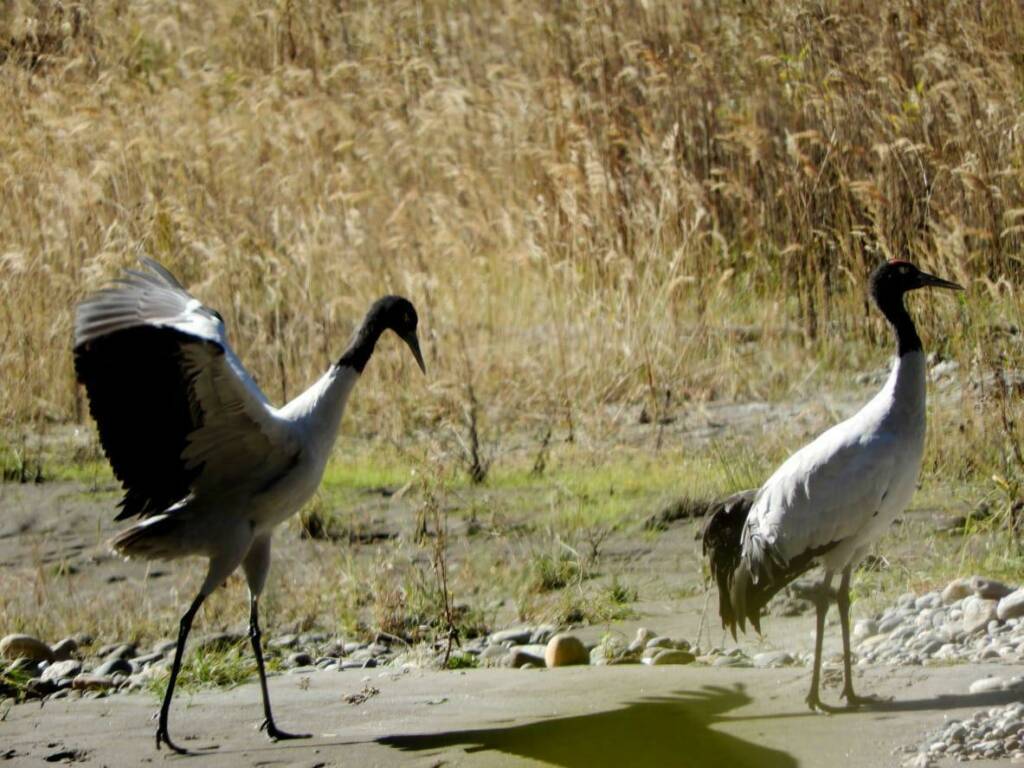
It is great to see the local youth, civil bodies and district administration working collectively towards protecting the habitat of Black- necked cranes in both Zemithang and Sangti valley. ‘Thung Thung Karmo’, as the people in Zemithang call it, needs all our collective action for safeguarding its wintering site.
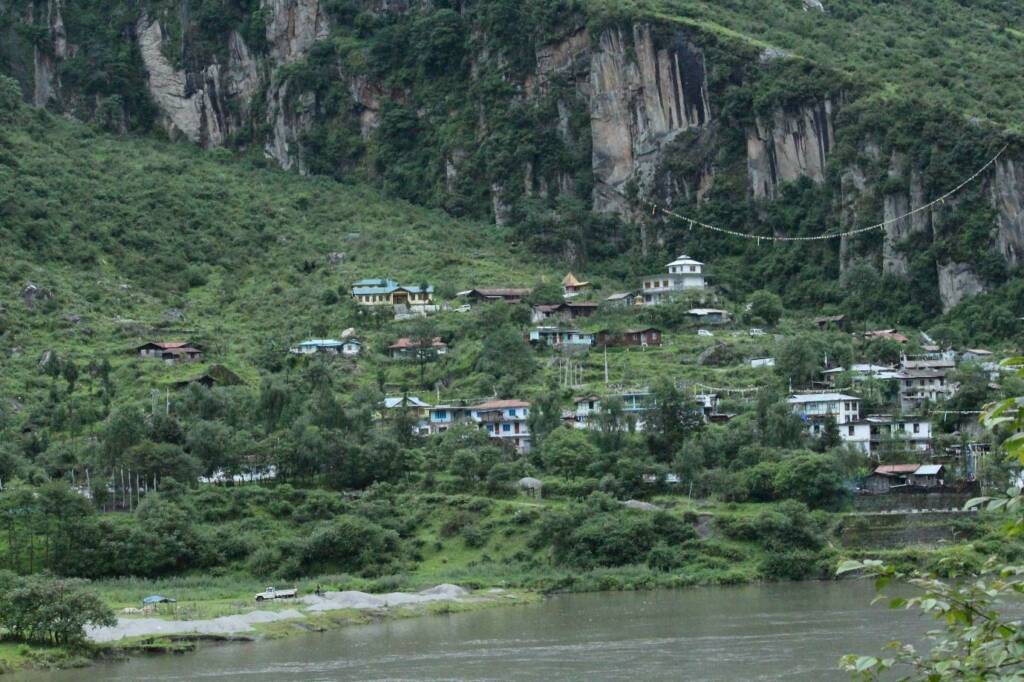
To reach Zemithang from Guwahati, you can drive up to Bhalukpong, which is the closest entry point to Arunachal. Bhalukpong to Dirang is a 140 kms drive along the Chariduar- Tawang Road. After covering almost 365 kms from Guwahati, take a night halt in Dirang. Next day, drive up to Tawang on NH13. Before reaching Tawang take the left diversion at Jang. The right road will take you to Tawang town whereas the left road will go down to Zemithang. 80 kms on this road, crossing Lumla and Gorsam, and you will reach Zemithang.
Manisha Kumari is a carefree researcher-cum-project implementer working in West Kameng and Tawang districts of Arunachal Pradesh with WWF- India. During her field work in Zemithang, Manisha loves taking a stroll along the Nyamjang Chu and staring at the mountains hiding Shocksten. Kruti Patel works as an independent illustrator with a focus on natural history and conservation. Currently, she is learning to explore and engage with her curiosity about river and wetland ecologies. She spends her time watching small creatures, wildflowers, neighborhood trees and skies that are ever changing with seasons.

